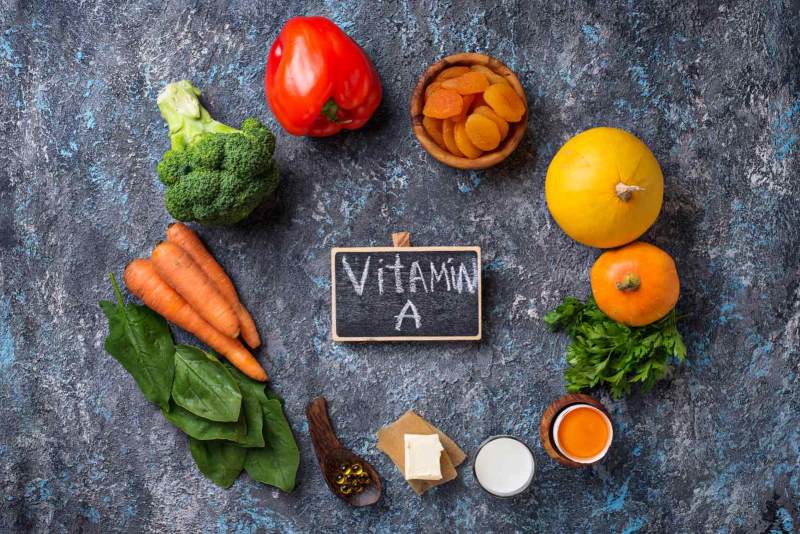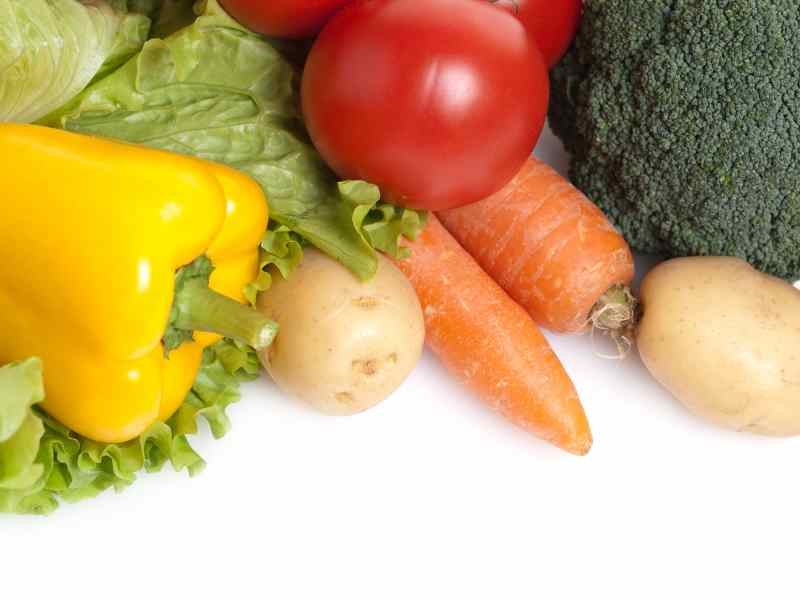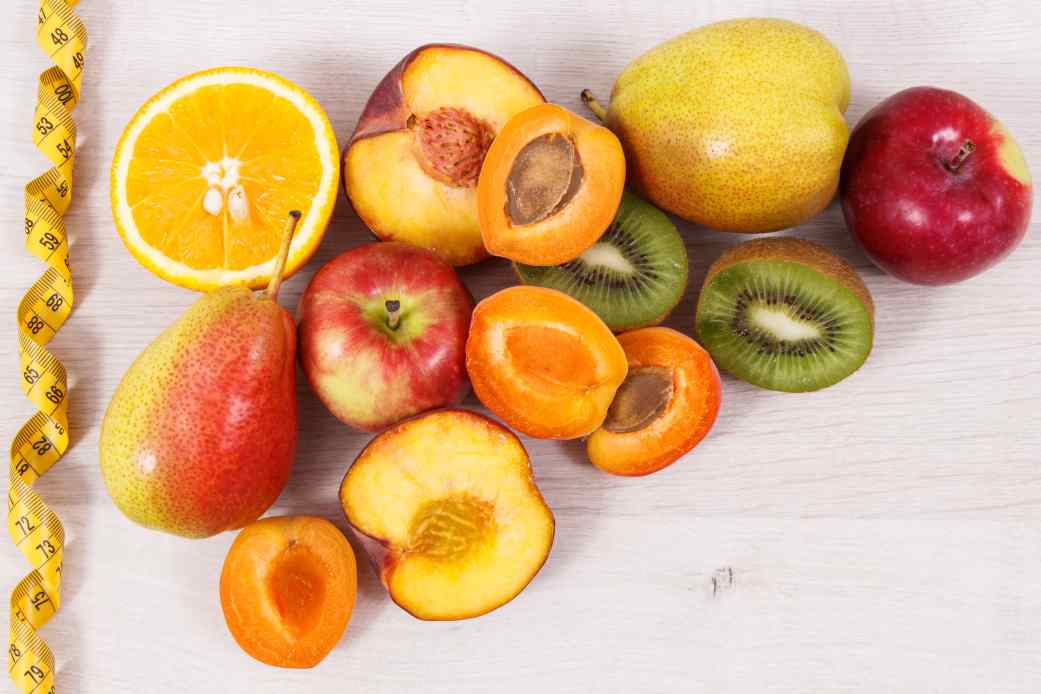47 Vitamin A Rich Foods, Fruits & Vegetables

Vitamin A is an integral micronutrient for the overall well-being of the human body as we are unable to produce it on our own. Therefore, individuals should obtain it through their diet. For this, one must be aware of the various vitamin A rich foods, fruits, and vegetables to gain an adequate amount of this essential nutrient.
If you are looking for this list, you have landed on the best page on the internet! Scroll below to know more.

Table of Contents

What Is Vitamin A?
We require fat-soluble vitamin A as one of their basic nutrients. The word "vitamin A" refers to a class of chemically related organic substances that comprises various provitamin (precursor) carotenoids, most notably beta-carotene, retinoic acid, retinol, and retinal (also known as retinaldehyde). Among its many uses are the development and growth of embryos, immune system maintenance, and vision.
What are the Sources of Vitamin A?
Vitamin A is a vital nutrient that supports healthy vision, cell growth, and immunity. There are two main types of vitamin A: retinol, found in animal products, and beta-carotene, found in plant sources.
Preformed vitamin A is found directly in animal-based foods, while provitamin A carotenoids are converted by your body into vitamin A. This means you can get vitamin A from various sources, depending on your dietary preferences.
Fish like salmon, tuna, and herring are packed with vitamin A. Orange and yellow vegetables are rich in beta-carotene, a type of provitamin A carotenoid that your body converts into vitamin A.
Top 47 Foods that Contain Vitamin A
Vitamin A is important for many reasons. The best way to get enough of this vitamin is through diet. Include vitamin A rich food items to ensure adequate intake. The essential nutrient vitamin A is found in a number of food items. Listed below are some of the top vitamin A rich foods in India:
List of Foods Rich in Vitamin A

Include these foods in your daily meals for keeping vitamin A a regular part of your diet. Below mentioned are some vitamin A rich foods.
SNo. |
Food | Description |
| 1 | Beef Liver | Animal livers fall under the richest sources of vitamin A because they store vitamin A in the liver just as humans do. Additionally, it also includes other nutrients like vitamin B12, vitamin B2, folate, choline, iron and copper. |
| 2 | Cod Liver Oil | With one tablespoon of cod liver oil offering about 4080 mcg of the nutrient, it is considered an excellent source of preformed vitamin A. |
| 3 | Black-Eyed Peas | Every cup of boiled black-eyed peas consists of 66 mcg of vitamin A. Along with vitamin A, they are a rich source of fibre, iron and plant-based protein. |
| 4 | Pumpkin Pie | Another food rich in vitamin A, pumpkin pie, contains about 488 mcg vitamin A in one serving. Pumpkins contain high amounts of beta-carotene like other orange vegetables. According to research, consumption of these items help prevent common eye issues, thereby preserving vision. |
| 5 | Tomato Juice | Rich in vitamin A, tomato juice is also beneficial to eye health, like pumpkins. |
| 6 | Herring | Apart from being a great source of vitamin A, herring proves to be an excellent option for those willing to raise their intake of omega-3 for brain and heart health. |
| 7 | Lamb Liver | 100 grams of lamb liver contains about 7491 mcg of vitamin A. |
| 8 | Liver Sausage | An individual can acquire around 8300 mcg of vitamin A by consuming liver sausage. |
| 9 | Salmon | 149 mcg of vitamin A is present in 100 grams of salmon. |
| 10 | Butter | 100 grams of butter contains about 684 mcg of vitamin A. |
| 11 | Hard-Boiled Egg | 1 large egg consists of 74 mcg of vitamin A. |
| 12 | Milk | Along with calcium, milk is a rich source of vitamin A. |
| 13 | King Mackerel | 100 grams of king mackerel provides around 252 mcg of vitamin A. |
| 14 | Bluefin Tuna | 757 mcg of vitamin A can be found in 100 grams of Bluefin tuna. |
| 15 | Goat Cheese | 100 grams of goat cheese provides 407 mcg of vitamin A. |
| 16 | Trout | 100 mcg of vitamin A can be found in 100 grams of trout. |
| 17 | Cream Cheese | 100 grams of cream cheese offers around 308 mcg of vitamin A. |
| 18 | Caviar | 271 mcg of vitamin A can be found in 100 grams of caviar. |
| 19 | Roquefort Cheese | 100 grams of Roquefort cheese provides 294 mcg of vitamin A. |
| 20 | Blue Cheese | 198 mcg of vitamin A is found in 100 grams of blue cheese. |
List of Vegetables Rich in Vitamin A

Vegetables are healthy sources of vitamin A. Below mentioned are some vitamin A rich vegetables. However, the actual content of vitamin A might vary as compared to that indicated here.
SNo. |
Vegetables | Description |
| 21 | Sweet Potato | The vitamin A present in a sweet potato is in the form of beta-carotene, which is known to provide protection against AMD. If an entire sweet potato is baked to its skin, it will provide about 1403 mcg of vitamin A. |
| 22 | Broccoli | Broccoli is another vitamin A rich vegetable. Half a cup of this cruciferous vegetable provides 60 mcg of vitamin A. |
| 23 | Carrots | Carrots are a rich source of beta-carotene. About 459 mcg of vitamin A is present in a half cup of raw carrots. |
| 24 | Spinach | Every half a cup of boiled spinach consists of 573 mcg of vitamin A, and there is a wealth of nutrients present in this leafy green vegetable along with this. |
| 25 | Winter Squash (Cooked) | 100 grams of cooked winter squash contains about 558 mcg of vitamin A. |
| 26 | Kale (Cooked) | 681 mcg of vitamin A is present in 100 grams of cooked kale. |
| 27 | Turnip Greens (Cooked) | 100 grams of turnip greens provide 381 mcg of vitamin A. |
| 28 | Parsley | Parsley provides an abundant source of nutrients like vitamin A. |
| 29 | Sweet Red Pepper | Half a cup of raw sweet red bell pepper offers 117 mcg of vitamin A. |
| 30 | Romaine Lettuce (Raw) | 100 grams of raw romaine lettuce provides 436 mcg of vitamin A. |
| 31 | Collards (Cooked) | 380 mcg of vitamin A is present in 100 grams of cooked collards. |
| 32 | Swiss Chard (Raw) | 100 grams of raw Swiss chard provides 306 mcg of vitamin A. |
| 33 | Pumpkin | Around 170% of an individual’s daily requirement of vitamin A can be fulfilled by consuming 100 grams of pumpkin. |
| 34 | Tomato | Along with vitamin A, tomatoes are rich in antioxidants and are known to control the growth of cancerous cells, especially stomach, colorectal and prostate cancer. |
| 35 | Peas | A single serving of 70 grams of peas offers more vitamins that the body requires on a daily basis. Besides vitamin A, it is rich in vitamin B, C and K. |
List of Fruits Rich in Vitamin A

If you were wondering as to which fruits have vitamin A, then this is the section for you!
The amount of provitamin A present in vegetables is usually much more abundant as compared to that in fruits. Nevertheless, there are some vitamin A rich fruits like:
SNo. |
Food | Description |
| 36 | Mango | An entire raw mango consists of approximately 112 mcg of vitamin A. |
| 37 | Cantaloupe | Half a cup of cantaloupe provides 135 mcg of vitamin A. |
| 38 | Dried Apricots | Ten dried halves of apricots contain about 63 mcg of vitamin A. |
| 39 | Red or Pink Grapefruit | A medium-sized grapefruit contains about 143 mcg of vitamin A. |
| 40 | Watermelon | 28 mcg of vitamin A is present in 100 grams of watermelon. |
| 41 | Papaya | 100 grams of papaya contains about 96 mcg of vitamin A. |
| 42 | Guava | 31 mcg of vitamin A is present in 100 grams of guava. |
| 43 | Goji Berries | Having half a cup of dried goji berries would provide you with around 26,822 IU of vitamin A. |
| 44 | Tangerine | A medium-sized tangerine would provide about 30 mcg of vitamin A. |
| 45 | Nectarine | There is about 24 mcg of vitamin A in a medium-sized nectarine. |
| 46 | Passion Fruit | Having a medium-sized passion fruit would provide you with about 12 mcg of vitamin A. |
| 47 | Peach | One peach can provide about 10% of the amount of vitamin A required daily by an individual. |
Vitamin A is an essential micronutrient, and every individual must consume proper vitamin A rich foods, including vegetables and fruits, in order to fulfil the required amount of intake. However, one must keep in mind that excessively high and low amounts of this vitamin can affect one’s body negatively.
Useful Tools to Track Your Health
Role of Vitamin A in Keeping the Body Healthy
The fat-soluble nutrient vitamin A proves to be highly crucial for the human body. It is available in two different forms, namely provitamin A and preformed vitamin A. This vitamin is found in both plant and animal food sources.
Preformed vitamin A can be referred to as the active form of the vitamin, which the body can make use of as it is. This form of vitamin A is found in animal products like dairy, meat, chicken, fish, etc.
Provitamin A carotenoids such as alpha-carotene, beta-cryptoxanthin and beta-carotene are the inactive vitamin forms found in plants. These are converted to the active vitamin form in the body like beta-carotene gets converted to retinol, an active form of vitamin A, in the small intestine.
Illustrated below are some of the major health benefits of this vitamin:
Provides Protection to the Eyes from Night Blindness and Decline Related to Age
Vitamin A is vital when it comes to the preservation of eyesight. It is required to convert light falling on one’s eyes to an electrical signal that can be sent to the brain.
Night blindness, also known as nyctalopia, is one of the early symptoms of deficiency of this vitamin. It affects vitamin A deficient individuals as this vitamin forms a major component of the pigment Rhodopsin.
This pigment is highly sensitive to light and is found in the retina of one’s eyes. Individuals affected with this condition are able to visualise objects normally during the day, but face difficulty in darkness as the eyes find it difficult picking up light at low levels.
Besides preventing night blindness, consuming enough beta-carotene might prove to be helpful in slowing down the decline in eyesight experienced by people as they get older.
AMD or age-related macular degeneration forms a leading reason for blindness in the developed world nowadays. The age-related eye disease study determined that administering an antioxidant supplement that includes beta-carotene to individuals with more than 50 years of age caused a 25% reduction in the risk of developing advanced macular degeneration.
However, there have been reviews that found that supplements of beta-carotene alone won’t be able to delay or prevent eyesight declination caused by AMD.
Supports the Immune System
Vitamin A helps maintain the natural defences of a body. It is also involved in the functioning and production of white blood cells that help capture and clear pathogens and bacteria from the bloodstream.
This indicates that being deficient in this vitamin would increase an individual’s susceptibility to infections and will also cause a delay in recovering when one falls sick.
It has been found that a correction of the deficiency of this vitamin in children has shown a lowering in the risk of death in countries where individuals commonly suffer from malaria and measles.
Might Protect Against Certain Cancers
Owing to the antioxidant properties, fruits and vegetables rich in carotenoids might provide protection against some specific types of cancer. It was found in a study that more than 10,000 smokers having the highest beta-cryptoxanthin and alpha-carotene levels had a 61% and 46% low risk of death due to lung cancer, respectively. This was compared to non-smokers having the lowest intake of nutrients.
In addition to this, test-tube studies demonstrated that retinoid might lead to the inhibition of the growth of some specific cancerous cells like that of ovarian, breast and bladder cancer.
Important for Foetal Development and Fertility
Vitamin A, due to its role in the development of egg and sperm, is considered essential for both female and male reproduction. In addition, some other areas where this vitamin proves to be crucial are foetal tissue development and maintenance, placental health, and foetal growth.
How Much Vitamin A Should You Intake?
According to the National Institutes of Health, your age and sex determine your required vitamin A. The following is a list of the average daily recommended levels of retinol activity equivalents (RAE) in micrograms (mcg) for preformed vitamin A and provitamin A carotenoids.
Age Group |
Recommended Vitamin A Intake (micrograms per day) |
| Birth to 6 months | 400 mcg RAE |
| Infants 7–12 months | 500 mcg RAE |
| Children 1–3 years | 300 mcg RAE |
| Children 4–8 years | 400 mcg RAE |
| Children 9–13 years | 600 mcg RAE |
| Teen males 14–18 years | 900 mcg RAE |
| Teen females 14–18 years | 700 mcg RAE |
| Adult males | 900 mcg RAE |
| Adult females | 700 mcg RAE |
| Pregnant teens | 750 mcg RAE |
| Pregnant adults | 770 mcg RAE |
| Breastfeeding teens | 1,200 mcg RAE |
| Breastfeeding adults | 1,300 mcg RAE |
Different Ways to Include Vitamin A Rich Foods in Your Diet
These dishes taste delicious and provide a healthy vitamin A dose to support your well-being. Here are a few ways to incorporate vitamin A rich foods into meals:
- Sweet Potato Fries: Slice sweet potatoes into fries, toss them in olive oil, sprinkle with salt and bake until crispy. Sweet potatoes are loaded with vitamin A.
- Carrot Soup: Make a creamy carrot soup by simmering carrots with onions, garlic, and vegetable broth, then blending until smooth. Carrots are packed with beta-carotene, a precursor to vitamin A.
- Spinach Salad: Create a nutritious salad with fresh spinach leaves and slices of hard-boiled eggs. Spinach is rich in vitamin A; eggs contribute to your daily intake.
- Mango Salsa: Whip up a vibrant mango salsa with diced mangoes, red onion, cilantro, lime juice, and a pinch of salt. Mangoes are a great source of vitamin A.
- Salmon with Kale: Grill or bake salmon fillets and serve them alongside sautéed kale. Both salmon and kale contain vitamin A, promoting healthy vision and skin.
- Pumpkin Risotto: Prepare a creamy pumpkin risotto using Arborio rice, vegetable broth, and diced pumpkin. Pumpkin is rich in vitamin A and adds a delightful sweetness to the dish.
- Apricot Glazed Chicken: Marinate chicken breasts in a mixture of apricot preserves, soy sauce, and garlic, then grill or bake until cooked. Apricots are rich in vitamin A and lend a sweet flavour to the dish.
- Guacamole: Mash ripe avocados with diced tomatoes, onions, cilantro, lime juice, and salt to make guacamole. Avocados are a good source of vitamin A and add creaminess and flavour to the dip.
Symptoms of Vitamin A Deficiency
These symptoms highlight the importance of consuming adequate vitamin A through a balanced diet to maintain overall health and well-being. Here are more details on each symptom of vitamin A deficiency:
- Night Blindness: Vitamin A is essential for producing rhodopsin, a pigment in the eyes that helps detect light. A deficiency in vitamin A can impair the ability to see in low-light conditions, leading to difficulty seeing at night or in dimly lit environments.
- Dry Eyes: Vitamin A plays a crucial role in maintaining the health of the surface tissues of the eyes, like the conjunctiva and cornea. Without sufficient vitamin A, the eyes become dry, itchy, or irritated, increasing the risk of dry eye syndrome.
- Skin Problems: A deficiency in vitamin A can lead to dry, rough skin and the development of follicular hyperkeratosis, a condition characterised by the accumulation of keratin around hair follicles, resulting in small bumps or patches of rough skin.
- Impaired Immunity: Vitamin A is necessary for the proper functioning of the immune system, including the development and activation of T and B cells. A deficiency in vitamin A can weaken the immune response, making the body more susceptible to infections.
- Delayed Growth: Vitamin A is important for normal growth and development, especially in children. A deficiency in vitamin A can impair growth, leading to stunted growth and delayed tissue and organ development.
- Reproductive Issues: Vitamin A plays a role in reproductive health, the development of sperm cells and the maintenance of the reproductive organs. A deficiency can contribute to reproductive issues like infertility, difficulty conceiving, or complications during pregnancy.
- Changes in Hair: Vitamin A is involved in the production of sebum, an oily substance that helps moisturise the scalp and hair. A deficiency in vitamin A can lead to dry, brittle hair that is more prone to breakage and hair loss or thinning.
- Reduced Bone Density: Vitamin A is important for bone health and the maintenance of bone density. A deficiency may lead to decreased bone mineralisation, increasing the risk of osteoporosis and fractures, particularly in older adults.
What are the Health Risks of Not Getting Enough Vitamin A?
Not getting enough vitamin A can have serious consequences for health and well-being, highlighting the importance of consuming an adequate amount of this essential nutrient through a balanced diet.
Vitamin A deficiency may lead to total blindness.
Lack of vitamin A causes an unhealthy immune system, increasing infection susceptibility.
Deficiency during pregnancy can increase risks of maternal mortality and congenital disabilities.
Deficiency can lead to dry, rough skin and follicular hyperkeratosis.
It plays a role in bone remodelling and density; deficiency increases the risk of osteoporosis.
In tissue repair and wound healing, deficiency can lead to delayed healing.
Necessary for optimal immune function, deficiency compromises immune response.
Side Effects of Excessive Vitamin A Intake
Excessive intake of vitamin A, either through supplementation or overconsumption of vitamin A rich foods, can lead to several side effects, including:
- Hypervitaminosis A: Consuming too much vitamin A can lead to hypervitaminosis A, which causes nausea, vomiting, headache, dizziness, and fatigue.
- Bone Health Issues: Excessive vitamin A intake has been associated with an increased risk of bone fractures and decreased bone mineral density.
- Liver Damage: The liver stores excess vitamin A, and prolonged high intake can lead to toxicity. Symptoms of liver damage are jaundice and abdominal pain.
- Central Nervous System Disorders: High vitamin A levels can affect the central nervous system, leading to irritability, confusion, and intracranial pressure.
- Birth Defects: Pregnant women who consume excessive amounts of vitamin A are at an increased risk of giving birth to babies with congenital disabilities.
- Skin Changes: Excessive vitamin A intake may cause skin changes, including dryness, itching, and peeling.
- Hair Loss: High vitamin A levels can lead to hair loss, although this side effect is usually reversible once vitamin A intake is reduced to normal levels.
- Gastrointestinal Issues: Excessive vitamin A intake may cause gastrointestinal symptoms such as abdominal pain, diarrhoea, and loss of appetite.
Should You Take a Vitamin A Supplement?
A diversified and balanced diet should provide all the required vitamin A. Vegetables and fruits are among the foods high in vitamin A that might assist a person in obtaining an appropriate dosage of the vitamin. The liver is one of the best sources of vitamin A.
Nevertheless, the human body does not generate vitamin A. For this reason, people have to get it from their food. If the vitamin A content in your body is too low, you could also take vitamin A supplements. Consult a medical practitioner before taking supplements to get a recommended dose. Avoid taking excessive amounts of vitamin A supplements, which may have negative effects.
Summary
Vitamin A is a vital fat-soluble vitamin present in a number of foods and is essential for normal vision, reproduction and the immune system. It is also helpful for kidneys, lungs, heart and other organs to function properly. However, this micronutrient is not produced by the human body.
Hence, individuals must obtain it from their diet. There are a number of vitamin A rich foods, including vegetables and fruits, which would help an individual gain an adequate amount of vitamin.
Vitamin A provides protection to the eyes from night blindness and decline related to age. It is necessary to convert light falling on one’s eyes to an electrical signal that can be sent to the brain.
Vitamin A helps to maintain a body’s natural defences. The white blood cells in the body help to capture and clear pathogens and bacteria from the bloodstream. This vitamin is involved in the functioning and production of these cells, thereby indicating that being deficient in this vitamin would increase an individual’s susceptibility to infections and will make it difficult to recover from sickness.
Due to the antioxidant properties, fruits and vegetables rich in carotenoids might provide protection against some specific type of cancer. In addition to this, as per test tube studies, retinoid might result in the inhibition of the growth of some specific cancerous cells like that of ovarian, breast and bladder cancer.
This vitamin is important for foetal and maternal health and for those individuals trying to conceive. Due to their role in the development of egg and sperm, vitamin A is considered essential for both female and male reproduction.
Now coming into the top vitamin A rich foods, one can opt to have the following:
Beef liver
Cod liver oil
Black-eyed peas
Pumpkin pie
Tomato juice
Herring
Lamb’s liver
Liver sausage
Butter
Salmon
Milk
Hard-boiled egg
King mackerel
Bluefin tuna
Goat cheese
Trout
Cream cheese
Caviar
Roquefort cheese
Blue cheese
If you are looking for vitamin A vegetables, consider having the following to get a good amount of this vital vitamin:
Sweet potato
Broccoli
Carrots
Spinach
Winter squash (cooked)
Kale (cooked)
Turnip greens (cooked)
Parsley
Sweet red pepper
Romaine lettuce (raw)
Collards (cooked)
Swiss chard (raw)
Peas
Tomato
Pumpkin
When it comes to the fruits that contain vitamin A, mango, papaya, guava, watermelon, cantaloupe, goji berries, tangerine, nectarine, peach, passion fruit, dried apricots, and red/pink grapefruit are some healthy options.
Vitamin A is a vital fat-soluble vitamin necessary for a number of body functions. To acquire the recommended daily intake, one must consume the best vitamin A rich foods. Nevertheless, one must keep in mind that there might be negative impacts on the body because of excessively high and low levels of this micronutrient.
Protect What Matters - Explore Other Insurance Options














